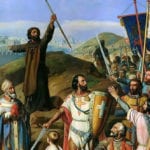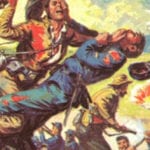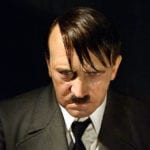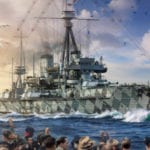 Weird Stuff
Weird Stuff  Weird Stuff
Weird Stuff  Mysteries
Mysteries 10 Tragic Disappearances and Deaths in Joshua Tree National Park
 History
History 10 Ways Childhood Really Sucked in the Old West
 Music
Music 10 Name Origins of Famous Bands from the 1990s
 Religion
Religion 10 Biggest Turnarounds by the Catholic Church
 Weird Stuff
Weird Stuff 10 Unbelievable Times Laws Had Unintended Consequences
 Humans
Humans Ten Historic Women Who Deserve Way More Credit Than They Got
 Movies and TV
Movies and TV 10 Films That Spawned Major Lawsuits
 History
History Ten Times Towns Were Wiped Off the Face of the Earth
 Creepy
Creepy 10 of the Most Disturbingly Haunted Public Houses in the UK
 Weird Stuff
Weird Stuff 10 Niche Subcultures That Are More Popular Than You Might Think
 Mysteries
Mysteries 10 Tragic Disappearances and Deaths in Joshua Tree National Park
 History
History 10 Ways Childhood Really Sucked in the Old West
Who's Behind Listverse?

Jamie Frater
Head Editor
Jamie founded Listverse due to an insatiable desire to share fascinating, obscure, and bizarre facts. He has been a guest speaker on numerous national radio and television stations and is a five time published author.
More About Us Music
Music 10 Name Origins of Famous Bands from the 1990s
 Religion
Religion 10 Biggest Turnarounds by the Catholic Church
 Weird Stuff
Weird Stuff 10 Unbelievable Times Laws Had Unintended Consequences
 Humans
Humans Ten Historic Women Who Deserve Way More Credit Than They Got
 Movies and TV
Movies and TV 10 Films That Spawned Major Lawsuits
 History
History Ten Times Towns Were Wiped Off the Face of the Earth
 Creepy
Creepy 10 of the Most Disturbingly Haunted Public Houses in the UK
Top 10 Battles of World War II
World War II was the bloodiest conflict in human history. The world was in a state of “total war.” Motivated by the threat of global tyranny, the Allies eventually prevailed, but this victory was marked by battles won and lost. This list looks at ten battles that decisively changed the course of the war. Battles are ranked based on what was at stake, and the effect they had on the war as a whole.

After the German conquest of Poland in September 1939, Hitler turned his attention to the west. His ultimate goal was to invade the Soviet Union, but he knew the defeat of the Western European nations was a necessity to avoid a two-front war. The first step was to invade the Low Countries (The Netherlands, Luxembourg, and Belgium) and France. Hypothetically, Germany could then conquer Britain, re-deploy to the East, and fight a one-front war against the Russians.
The German Army was actually outnumbered by the Allies. However, the numbers game didn’t matter because the German plan was so effective. Once the Germans invaded the Low Countries, the French Army, and British Expeditionary Force (BEF) moved north to face the Germans head-on. This allowed German Army Group A to cut through the Allied defenses in the Ardennes and advance towards the English Channel, effectively trapping them with their backs against the sea. A new offensive was launched against Paris, France fell, and the BEF was evacuated at Dunkirk. The country was divided into German occupation zones and Vichy France. Germany was then free to focus on knocking Britain out of the war.
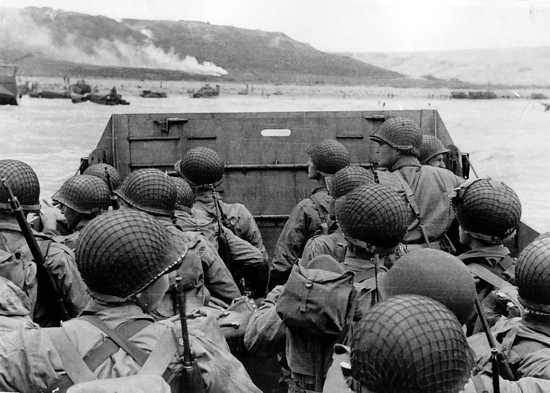
By the summer of 1944, the Red Army was at Germany’s doorstep. There is no doubt that the Russians could have singlehandedly defeated Nazi Germany (hence this ranking at number 9), but Stalin had been putting pressure on the West to open a second front in an attempt to divert German resources and bring a quicker end to the war. The American Air Forces and British Royal Air Force (RAF) had been waging a strategic bombing campaign since 1942. The Allies controlled the Mediterranean theater, and invaded Italy in 1943. However, it was strategically necessary to launch a full-scale invasion of France to destroy the main force of the German Army in Northern Europe.
Operation Overlord commenced with the Normandy landings in June of 1944. By August, there were more than 3 million Allied troops in France. Paris was liberated on 25 August, and the German Army had been pushed back completely, and retreated across the River Seine by 30 August. Germany was forced to reinforce the Western Front with resources from the Eastern and Italian Fronts. The result was a decisive Allied strategic victory. By September, Western Allied forces were approaching the German border. Nazi Germany would surrender less than a year later. More importantly, Western Europe was not to be controlled by communist Russia, which had immense postwar political implications.
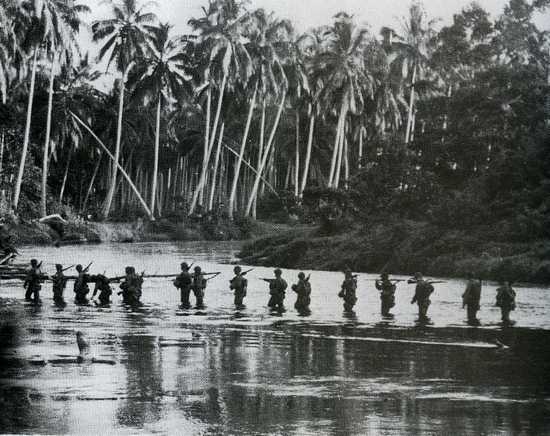
Up until August 1942, the Allies had been on the defensive in the Pacific Theatre. The offensive capability of the Japanese had been reduced following the naval battles of Coral Sea and Midway. However, Japan was still on the offensive and was planning invasions of Fiji, New Caledonia, and Samoa. By August 1942, the Imperial Japanese Navy was in the process of constructing a series of bases in the Solomon Islands that would provide a staging area for these planned invasions and offer protection of their major base at Rabaul. The Allies saw this as a major threat to Australia. The Japanese were in the process of constructing an airfield on Guadalcanal that could increase Japanese air cover for their naval forces advancing in the South Pacific. The Allies planned to invade the Solomon Islands in an effort to deny the use of the islands by the Japanese. This would also be the starting point for an Island hopping campaign aimed at retaking the Philippines and eventually invading the Japanese mainland.
On 7 August, 11,000 Marines of the 1st Marine Division under the command of Major General Alexander Vandergrift landed on Guadalcanal. The only resistance the Marines faced was the jungle itself. On 8 August, they successfully secured the Japanese airfield, which the Marines named “Henderson Field.” The American Navy planned to withdraw from the area on 9 August after Japanese aircraft attacked the fleet during the initial landings. During the night of 8 August, the Japanese Navy surprised the Allied warships and sank one Australian and three American cruisers. The Navy could not afford to lose another carrier, so they left the Marines without unloading needed equipment and supplies. The Marines formed a perimeter around Henderson Field and small contingent of American aircraft, known as the “Cactus Air Force,” stationed there. The Japanese landed thousands of troops throughout the month and continually attacked the Marines in an attempt to recapture the airfield. Finally, in February of 1943 the Japanese withdrew their forces from the Island. The victory at Guadalcanal was an important military and psychological victory for the Allies. After the campaign, Allied personnel regarded the Japanese military with less fear than previously. Japanese general Torashiro Kawabe even said, “As for the turning point, when the positive action ceased or even became negative, it was, I feel, at Guadalcanal.”
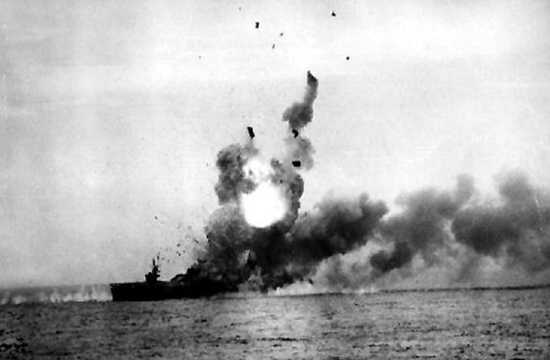
In June 1944 the Americans had breached Japan’s inner defensive ring and had bases that could be used by B-29 Superfortresses to bomb the Japanese home islands. The next step was to cut Japanese supply lines by invading the Philippines or Formosa (Taiwan). The Allies didn’t have the manpower to take Formosa, and General Douglas Macarthur had championed an invasion of the Philippines ever since 1942 when he famously pronounced, “I shall return.” The Japanese response was to attack the American landing force that was attempting to take the Philippine island of Leyte. The Japanese Northern Force would try to lure the American forces away from Leyte. The Southern Force and the powerful Center Force would then attack the landing area.
The Northern Force successfully diverted the US 3rd fleet under the command of Admiral William Halsey. The Japanese Southern Force was intercepted and destroyed by the 7th Fleet Support Force; a substantial fleet of six battleships, four heavy cruisers, and four light cruisers. Halsey’s decision to take all of the available strength of the 3rd Fleet northwards left the northern landing area guarded by 7th Fleet’s slow escort carriers and small destroyers. The Japanese Center Force of four battleships, six heavy cruisers, two light cruisers, and eleven destroyers caught the American ships by surprise. The American destroyers, “small boys,” were ordered to attack. The destroyers’ suicidal attacks on the Center Force convinced the Japanese that they were in fact being attacked by Halsey’s 3rd fleet. The Japanese withdrew after losing four carriers, three battleships, eight cruisers, and twelve destroyers. The Battle of Leyte Gulf was the largest naval battle in history and basically resulted in the destruction of the Imperial Japanese Navy. For the remainder of the war, the Japanese could only rely on land forces and Kamikaze attacks. Their supply of oil and other important war materials from Southeast Asia had been cut.
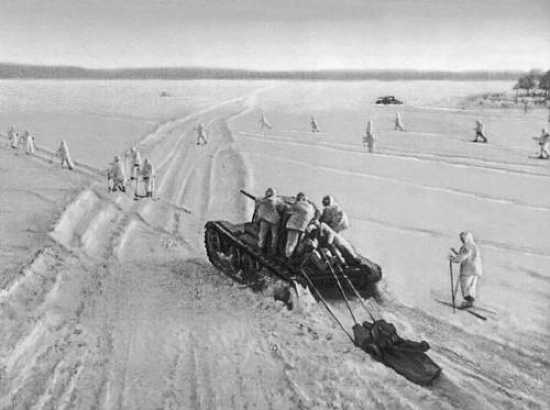
Hitler’s objective in invading the Soviet Union (Operation Barbarossa) was always Moscow. This capital city was considered to be extremely important militarily and politically. The original Axis plan was to capture Moscow within four months after the start of the invasion of the USSR. The Axis wished to take the capital before the onset of winter. Autumn rains and stiffened resistance slowed the Germans, but by December they were less than 19 miles from Moscow. The exhausted Red Army was saved by a terrible Russian winter, and fresh troops from Siberia, trained for winter warfare. Temperatures dropped as low as 50 below zero. German troops had no winter clothing, and the Panzers were not designed to operate in such low temperatures. On 5 December 1941 the Russians counterattacked and pushed the German army back.
For the first time, the Germans retreated on a large scale. Operation Barbarossa had failed. Hitler now faced a war of attrition, something he was bound to lose. The Germans sustained around 400,000 casualties. More importantly, Hitler took personal charge of the military and set most experienced German officers against him. Hitler’s distrust of his senior officers reduced the German advantage of superior military leadership. The Soviets did launch offensive the following spring, but this did little more than set the stage for the Battle of Stalingrad, a battle which they would win.
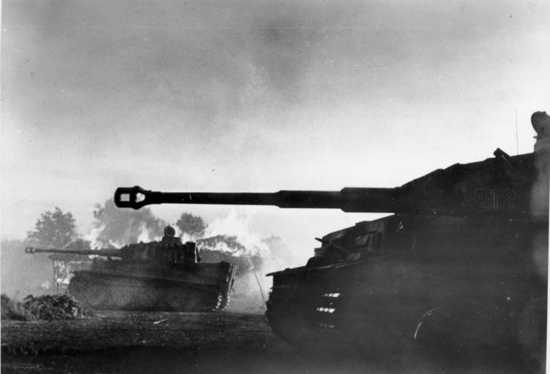
The Battle of Kursk took place after the Battle of Stalingrad, and was the final offensive the Germans were able to launch in the east. The Germans envisioned breaking through the northern and southern flanks to encircle the Soviet forces. However, the Soviets knew Hitler’s intentions and constructed a series of defensives. The Germans delayed the attack to wait for new Tiger and Panther tanks, giving the Red Army even more time to dig in and gather forces for a counterattack. To give some perspective, the defensive networks around Kursk were 10 times deeper than the Maginot Line. The main German attack began on 5 July. Due to the depth of the Russian defenses, the German blitzkrieg was stopped. This was the first time a blitzkrieg offensive had been defeated before it could break through enemy defenses and into its strategic depths. After the failed attack, the Red Army counterattacked. The Germans would be on the defensive for the rest of the war in the east.
The war in Europe would last for two more years, but the time the Battle of Kursk was over, the Americans and British were on the verge of invading Italy, the Red Army was on the offensive, and the Allies were producing more war materials than the Germans. At Kursk alone, the Germans lost 720 tanks, 680 aircraft, and sustained 170,000 casualties. The battle was the largest tank battle in history, and the Germans paid dearly. By the end of 1943, they were being pushed back across a broad front in the East, and faced the possibility of a second front in the west. After three years of war, the Allies finally had the strategic advantage.
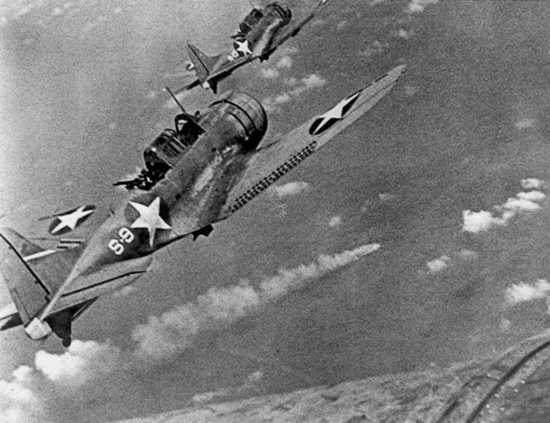
After Pearl Harbor and the Battle of the Coral Sea, the Japanese hoped to eliminate the United States as a strategic power in the Pacific Theatre. They chose to occupy Midway Atoll to extend their defensive perimeter, and to lure the American aircraft carriers into a fight. Luckily for the Americans, they had broken the Japanese code and knew roughly where, when, and in what strength the Japanese would appear. The Japanese, on the other hand, had no real knowledge of the American’s strength or location. They thought they would be up against two American carriers, since the USS Yorktown was severely damaged at the Battle of the Coral Sea. The Yorktown was repaired in only 72 hours, and was able to join the carriers Enterprise and Hornet for the battle. They faced four Japanese carriers, but had an airfield on Midway, so the field was basically even. It was only a matter of which side discovered the other first.
American B-17s from Midway found the Japanese, under the command of Admiral Nagumo, on June 3, but failed to hit any targets. On 4 June the initial attack was launched on Midway. Most American planes operating from Midway were destroyed, but Nagumo chose to attack Midway again. They had detected a single American carrier, and decided to arm the planes with anti-ship weapons, which would take 45 minutes. This wouldn’t matter because the American aircraft that would deliver the crushing blow were already on their way. A low flying American torpedo plane squadron was completely destroyed by the Japanese air patrol, but this opened the door for the SBD Dauntless dive bombers. Four Japanese carriers were sunk, and most of the veteran pilots aboard were killed. By the time the Japanese replaced their three carriers, the US had commissioned two dozen. Midway paved the way for the landings at Guadalcanal, and gave the Allies the strategic initiative to be on the offensive for the rest of the war in the Pacific.
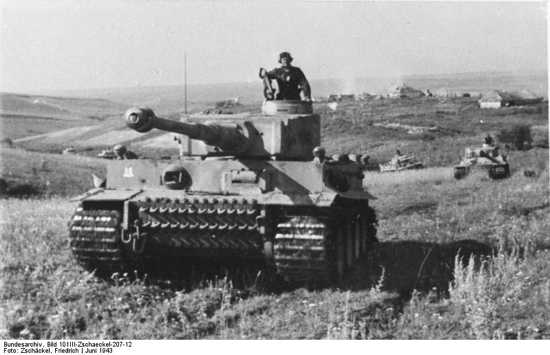
The Nazi invasion of the Soviet Union began on 22 June 1941 and ended with the Battle of Moscow (this specific battle was listed at number five due to its importance). The total operation involved 8.9 million combatants, over 18,000 tanks, 45,000 aircraft, and some 50,000 artillery pieces on both sides combined. Like Operation Overlord, Operation Barbarossa actually consisted of several decisive battles, but the numbers involved, and the fact that the Soviet Union was plunged into war, places it a number three on this list. When Germany invaded, the Red Army was caught completely off guard. A non-aggression pact was signed before the German and Soviet invasion of Poland. Both countries invaded and occupied Poland, but Hitler had always seen Russia as a source of agriculture, slave labor, oil, and other raw materials. Even before the Nazis concluded their conquest of the Balkans, they began to mass over 4.5 million Axis troops near the Soviet border. Three Army groups were formed; each assigned to capture specific regions and cities. Army Group North would attack through the Baltic States and take Leningrad. Army Group Center was tasked with taking Moscow, and Army Group South was to attack the agricultural heartland of the Ukraine and move eastward toward the oil-rich Caucasus. The Red Army, although numerically superior to the Germans, was dispersed, unprepared, and suffered from poor leadership.
The Germans swiftly advanced across the entire front. Key battles took place at Smolensk, Uman, and Kiev. Panzer armies were able to encircle and capture three million Soviet soldiers by the time they reached Moscow. By December, they had surrounded Leningrad in the north, reached the outskirts of Moscow in the center, and occupied the entire Ukraine in the south. They held 500,000 square miles of Soviet territory with over 75 million people. The Soviets held at Moscow, but not before 800,000 troops were killed, 3,000,000 wounded, and over 3,000,000 captured. 20,000 Soviet tanks and 21,000 aircraft were destroyed. The Germans casualties included 250,000 killed, 500,000 wounded, 2,000 aircraft destroyed, and 2,700 tanks lost. The Soviet Union would lose 14% of its population in the war: almost 24 million people.
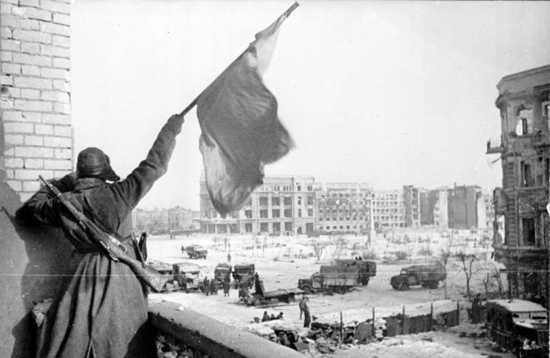
The Battle of Stalingrad was the Midway of the Eastern Front. The battle was a disaster for Germany, and made victory in the East virtually impossible. After the Red Army had prevailed at Moscow, the Eastern Front had stabilized in line running from Leningrad to Rostov near the Black Sea. Hitler was confident he could defeat the Red Army when the weather was no longer an issue. The capture of Stalingrad was important because it was a vital transportation route between the Caspian Sea and northern Russia, and was the gateway to the oil-rich Caucasus region. Its capture would also be an ideological victory due to the fact that Stalingrad bore the name of Joseph Stalin. The battle began with the Luftwaffe reducing the city to rubble and rendering the River Volga, vitally important for bringing supplies into the city, unusable. By the end of August, the Germans had reached Stalingrad.
The Soviets tried to keep their front lines as close to the Germans as possible. This “hugging” tactic in an urban environment negated the German doctrine which relied on close cooperation between infantry, tanks, engineers, artillery, and aircraft. German infantry units were forced to fight on their own, or risk taking casualties from their own supporting fire. The Soviets were able to hold onto the city until winter. At certain points in the battle, the Germans held 90% of the city, but the Red Army counterattacked in November and were able to encircle 300,000 Axis troops. The Germans sustained 841,000 casualties, and would only launch one more offensive at Kursk, which would end up being another disastrous defeat.
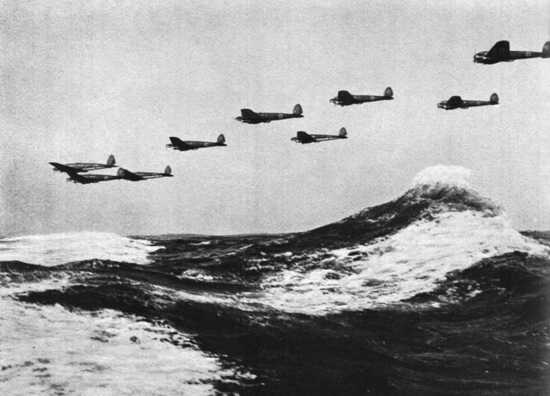
If the United Kingdom was knocked out in the war, Hitler could have focused all of Germany’s military might on the Soviet Union. The Americans and Soviets would have to fight the Axis alone, and the British Isles could not have been used as a staging point for Operation Overlord. For these reasons, The Battle of Britain is without a doubt the most important battle of the Second World War. The British Expeditionary Force was, for the most part, successfully evacuated at Dunkirk following the Battle of France. However, most of their equipment was left in France. At the beginning of the Battle of Britain the only fully equipped division in England was Canadian. If Germany achieved air supremacy over the skies of Britain, they could have launched Operation Sea Lion (the invasion of the British Isles). The Royal Navy would have been ineffective in stopping the invasion without air cover.
The initial Luftwaffe strategy was to destroy Royal Air Force bases. This worked quite well until the strategy changed to bombing towns and cities. This gave the RAF a chance to replace its lost aircraft. Radar was essential. Without it, the RAF would have to keep planes in the air at all times. They lacked the resources to do this. Radar allowed fighters to wait on the ground and coordinate attacks on the German bomber formations. By October of 1940, the Luftwaffe was running low on aircrews and aircraft. German air supremacy was not achieved, and Hitler postponed Sea Lion indefinitely. The end of the Battle allowed Britain to rebuild its military and establish itself as an Allied stronghold. Winston Churchill summed the battle with the words, “Never in the field of human conflict was so much owed by so many to so few.”
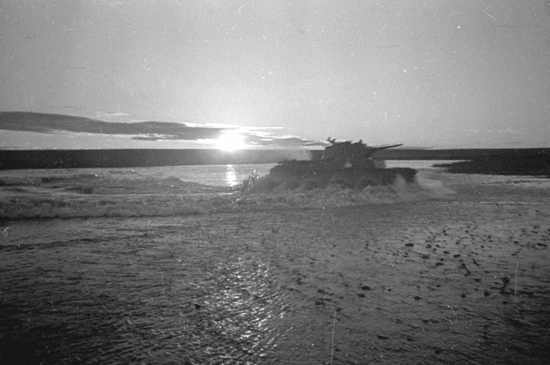
The Battle of Khalkhin Gol was the decisive engagement of the Soviet-Japanese Border War. Japan occupied Manchuria in 1931 (some consider this the start of World War II). Military interest was then turned to Soviet territories that bordered this area. The first clash between Japanese and Soviet forces was in 1938. There were frequent engagements along the border of Manchuria, but the Japanese were decisively defeated at Khalkhin Gol in May of 1939. The engagement was relatively small compared to later battles of the war. Only 95,000 troops were involved, but the implications of the battle were huge. The Japanese saw the resources in the Soviet Union as unattainable. They instead seized resource-rich territories in Southeast Asia.
The Empire of Japan and the Soviet Union signed the Japanese-Soviet Nonaggression Pact in April of 1941, and both countries remained at peace until Stalin declared war on Japan in 1945 (after the atomic bombs were dropped). With Japan’s eyes turned eastward, Stalin was free to transfer his Siberian divisions west, where they played a crucial role in defeating the Germans at the Battle of Moscow.
